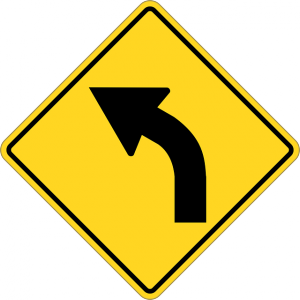Dofollow vs Nofollow Links: What’s The Difference?
- Apr
- 15
- Posted by John Arnott
- Posted in Link Building, Natural Links, web search
- 3
 Backlinks, links from outside sites linking to your site, are typically broken down into one of two different categories: “dofollow” or “nofollow.” While most Internet users are completely oblivious to the type of links they see and click, it’s important for webmasters to take notice. If part of your SEO strategy involves link building (which it should), you should focus on dofollow links.
Backlinks, links from outside sites linking to your site, are typically broken down into one of two different categories: “dofollow” or “nofollow.” While most Internet users are completely oblivious to the type of links they see and click, it’s important for webmasters to take notice. If part of your SEO strategy involves link building (which it should), you should focus on dofollow links.
Up until the early-to-mid 2000s, all links were dofollow. It wasn’t until 2005 when Google’s Matt Cutts and Blogger’s Jason Shellen proposed a new HTML link attribute to devalue links, known as the nofollow attribute.
A typical nofollow link looks something along the lines of <a href=”https://www.example.com/” rel=”nofollow”>Link text</a>.
So, what’s the purpose of the nofollow attribute? It’s exactly what it sounds like: to devalue its authority or “link juice.” While Google has yet to reveal its exact ranking algorithm, it’s no secret that backlinks play a key role. Websites with high-quality, relevant backlinks will rank higher than websites with few-to-no backlinks. The nofollow is basically a “don’t count this link for ranking purposes” message to search engines.
Some webmasters may not want to pass their authority to other linked sites, so they use the nofollow attribute. If a blogger allows visitors to submit comments, for instance, he or she may tag all visitor-created links with the nofollow attribute; thus, preventing visitors from abusing the commenting feature by creating countless backlinks.
“In general, we don’t follow them. This means that Google does not transfer PageRank or anchor text across these links. Essentially, using nofollow causes us to drop the target links from our overall graph of the web,” wrote Google in its explanation of the nofollow attribute. “However, the target pages may still appear in our index if other sites link to them without using nofollow, or if the URLs are submitted to Google in a Sitemap. Also, it’s important to note that other search engines may handle nofollow in slightly different ways.”
Does this mean that nofollow links offer no value? Not necessarily. While Google states that it “doesn’t follow them,” visitors can still click on nofollow links to visit the respective site or page. And when this happens, it funnels traffic to the linked site, which could help to increase its search ranking.
The bottom line is that you should focus your efforts on building dofollow links by creating quality content that people want to share or link to. But when appropriate, feel free to create nofollow links as well. For example, a link to Wikipedia is a nofollow link, but can still add value to your site.
Have anything else you would like to add? Let us know in the comments section below
Related posts:
Get More Traffic in 2015 – FREE eBook!
Categories
- advertising
- advertising and marketing
- business and industrial
- databases
- Directories
- graphics software
- internet technology
- Link Building
- marketing
- Natural Links
- SEO
- shareware and freeware
- social network
- software
- technology and computing
- Traffic
- web search
- WhyIStartedABlog.com Case Study
Recent Posts
- How to Create Content that Attracts Backlinks
- Study: Link Quality Holds More Value Than Quantity
- How to Obtain Backlinks for a Local Business Website
- Why Your Backlink Strategy Isn’t Working
- Internal Linking: Best Practices to Follow
Recent Comments
- Sarah Lorigan on Study: Link Quality Holds More Value Than Quantity
- A. Bailey on How to Create Content that Attracts Backlinks
- Kai on How to Create Content that Attracts Backlinks
- Sam on Study: Link Quality Holds More Value Than Quantity
- Carolyn V. on Study: Link Quality Holds More Value Than Quantity




I will work on the do follows wisely now
Thanks! That definitely helps me understand do follow and no follow links better, I’m still a beginner!
I was always being confused between dofollow and nofollow links. Thanks for sharing this info.